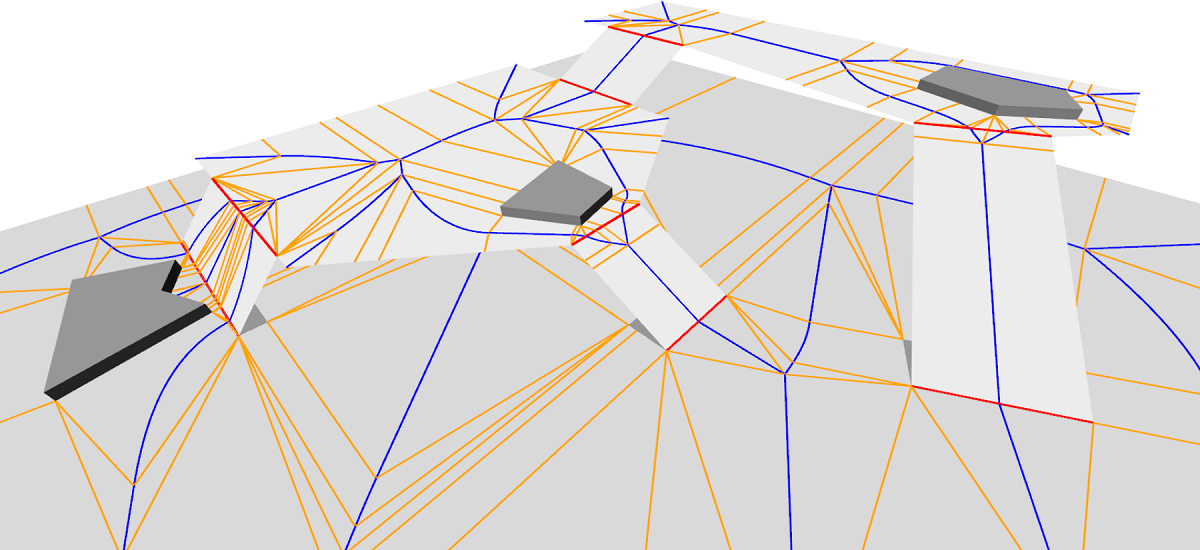Research overview

A huge challenge is to simulate tens of thousands of agents (e.g. characters, robots, pedestrians, or monsters) in real-time where they pro-actively and realistically avoid collisions with each other and with obstacles present in their environment, especially near narrow passages where cooperative behavior is required. This environment contains semantic information (e.g. roads and bicycle lanes, dangerous and pleasant areas), is usually three-dimensional (e.g. contains bridges where people can walk over and under as well) and can dynamically change (e.g. a bridge partially collapses).
We study how we can automatically create a data structure that represents the walkable surfaces in virtual environments, and how it can be updated dynamically and efficiently when it changes. We refer to this structure as a navigation mesh. This mesh enables efficient crowd simulation, which is our next topic of research. We study and develop a crowd simulation framework and its components, which ranges from global (AI) planning to local animation. We create models for realistic crowd behaviors, which includes studying how (groups of) people move and avoid collisions in such environments, based on agent profiles and semantics (such as terrain annotations).
We continuously integrate our research into our UU Crowd simulation software which is used by many research institutes and companies. We run simulations in realistic environments (e.g. soccer stadiums or train stations) and game levels to study the effectiveness of our methods.